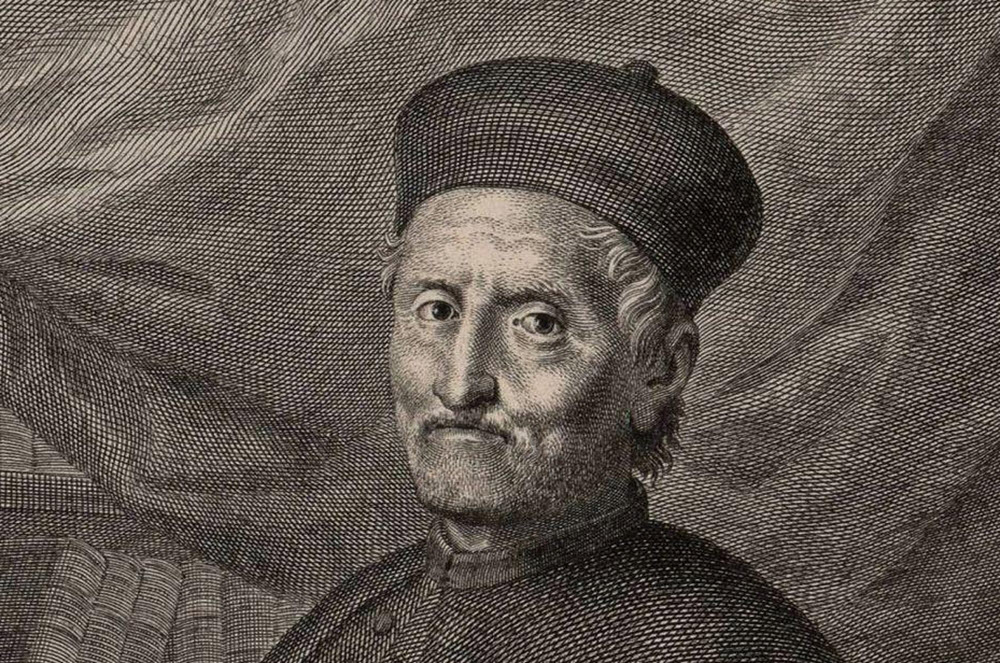Macroeconomics largely comes from two areas of research: business cycle theory and monetary theory. One of the early key economists in the field of monetary theory was the Catholic theologican Martín de Azpilcueta. Hailing from the Kingdom of Navarre on the Iberian penninsula, he is also known as Doctor Navarrus.
Martín de Azpilcueta (1491-1586) was a canonist and theologian who formulated the quantity theory of money in 1556, and is considered one of the early macro-economists.
Azpilcueta´s 1549 “Manual de confessores y penitentes” (Manual for confessors and penitents), originally written in Spanish but later translated, became highly influential within the Catholic church. By the first quarter of the 1600s, it had been published in over 80 editions. In many ways, this manual was a seminal step in the development of moral theology as its own discipline.
Azpilcueta wrote four appendices for the manual, and one of them addressed exchange, supply and demand of money.

In his work, Azpilcueta argues that the use of money in exchange is not unnatural. Hence, he opposes the teachings of Aristotle on that point. Azpilcueta put money on the same level as any other merchandise, and, consequently, established that the morality of exchanges did not depend on money as their object but on an equitable exchange.
It should also be noted that in his work on the revenues of benefices, Azpilcueta maintained the beneficed clergymen were free to expend the fruits of the benefices only for their own necessary support and that of the poor. This work was originally published in Spanish in Salamanca in 1566, and dedicted to King Philip II of Spain and Pope Pius V. A Latin version war released in 1568.
Examples of notable economists strongly influenced by Azpilcueta are Luis de Molina (1535 – 1600) and Murray Newton Rothbard (1926 – 1995).
The life of Martín de Azpilcueta
On 13 December, 1491, Martín de Azpilcueta was born in Barásoain, a town in Navarre. Barásoain is located within the historic lands of the Basque Country, and his last name is spelled Azpilkueta in Basque.
Martín de Azpilcueta obtained a degree in theology at Alcalá, and then – in 1518 – became a doctor of canon law at Toulouse, France.
Beginning in 1524, Azpilcueta served in several canon law chairs at the University of Salamanca. In 1538-1556, he was a teacher at Coimbra University in Portugal.
When he was 80 years old, Azpilcueta travelled to Rome to defend his friend Bartolomé Carranza, Archbishop of Toledo, who was being persecuted by the Spanish Inquisition. (The Archbishop was convicted.) Azpilcueta was well recieved in Rome and honored for his learning and prudence.
Azpilcueta died in Rome on 1 June, 1586, at the age of 94. He is buried in the Church of Saint Anthonoy in Campo Marzio, Rome, a church dedicated to Saint Anthony of Lisbon and functioning as a national church of the Portuguese community.
Relation to Francis Xavier
Martín de Azpilcueta was related to Francis Xavier (1506-1552), the Navarrese Catholic missionary who co-founded the Society of Jesus, and was canonized as a saint in 1622. Fracis Xavier´s full name was Francisco de Jasso y Azpilcueta, as his mother was the noble heiress Doña María de Azpilcueta y Aznárez.
Other works by Azpilcueta
Commento en Romance (1545)
“Commento en Romance”, released in Coimbra in 1545, aruged for the use of vernaculars and thus took a stance against the proponents of the Catholic Counter-Reformation who insisted on using only Latin for liturgy and divulgation. In Commento en Romance, Azpilcueta wrote down the prayers of Our Father, Hail Mary, and Creed in both Latin and Romance (i.e. Castilian)
Miscellaneum centum (1586)
In his 1586 work Miscellaneum centum, Azpilcueta explained that vernaculars had been used earlier in the Catholic church, and been aproved by bishops and inquisitors. He cited “a pious and knowledgeable Cantabrian”, by which he meant Sancho de Elso from Estella, who had used the Basque language in prayers.
Azpilcueta argued that unfamiliarity with Christian teachings exhibited by “the rustic dwellers and highlanders” was due to them having to learn Latin teachings, which meant that they memorized them by heart instead of actually learning them and understanding them in their native language.
More
Throughout his life, Azpilcueta wrote numerous other works, including Consilia et repsonsa (in Latin). In his works, he dealt with issues such as ecclesiastical property, the breviary, the regulars, and jubilee years.
A three-volume complete edition of his works was published in Rome in 1590. Since then, other complete editions have been published, including in Lyon in 1590, Venice in 1602, Cologne in 1615.
A compendium of Azpilcueta´s writings was made by J. Dastellanus, in Venice in 1598.
This article was last updated on: July 31, 2022
